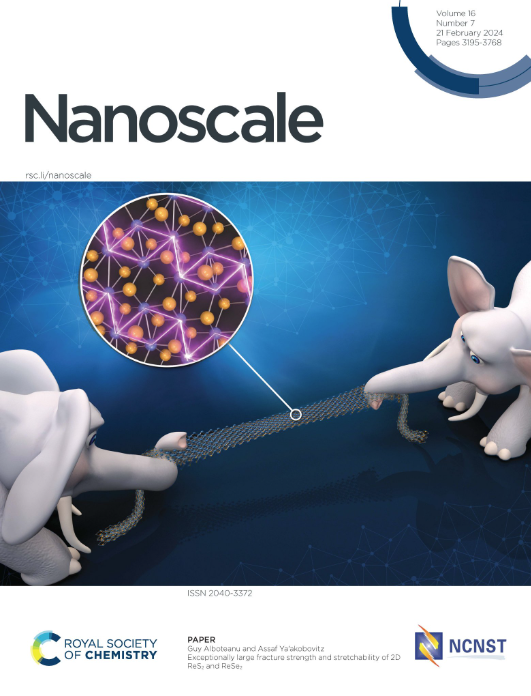Functionalization with polymer ligands enhances the catalytic activity of surfactant-stabilized gold nanoparticles.
IF 5.8
3区 材料科学
Q1 CHEMISTRY, MULTIDISCIPLINARY
引用次数: 0
Abstract
Plasmonic nanoparticles are increasingly explored as catalytically active entities to affect (photo-)catalytic transformations. Synthesis methods are established for accessing such nanoparticles with defined dimension and shape, thereby controlling their plasmonic behavior, including the possibility of resonance engineering and the control of chiral plasmonic properties of single plasmonic nanoparticles that can be used to drive asymmetric photocatalytic transformations. However, the most productive nanoparticle synthesis procedures employ surfactants that lead to comparably dense surface layers and may limit surface accessibility. In this work, we demonstrate that functionalization of such surfactant-stabilized plasmonic gold nanoparticles with a brush-type polymer-ligand layer results in both significantly increased catalytic activity in the colloidal solution state (by a factor of ∼4) and excellent colloidal stability, enabling several catalytic cycles. Heterogeneous catalysis experiments performed after surface deposition allowed the comparison between polymer ligand-grafted and ligand-free gold nanoparticles, which show comparably weak differences in catalytic rate (a factor of ∼1.8). These results pave the way for efficient (photo-)catalysis driven by well-defined plasmonic nanoparticles in colloidal solution.高分子配体的功能化提高了表面活性剂稳定金纳米颗粒的催化活性。
等离子体纳米粒子作为催化活性实体越来越多地被探索,以影响(光)催化转化。建立了获得具有定义尺寸和形状的纳米颗粒的合成方法,从而控制其等离子体行为,包括共振工程的可能性以及可用于驱动不对称光催化转化的单等离子体纳米颗粒的手性等离子体性质的控制。然而,最有效的纳米颗粒合成方法使用表面活性剂,导致相对致密的表面层,并可能限制表面的可及性。在这项工作中,我们证明了这种表面活性剂稳定的等离子体金纳米颗粒与电刷型聚合物配体层的功能化导致胶态溶液状态下的催化活性显著增加(约4倍)和优异的胶体稳定性,从而实现了几个催化循环。表面沉积后进行的非均相催化实验可以比较聚合物配体接枝和无配体的金纳米颗粒,它们的催化速率差异相对较弱(因子为1.8)。这些结果为在胶体溶液中由定义明确的等离子体纳米粒子驱动的高效(光)催化铺平了道路。
本文章由计算机程序翻译,如有差异,请以英文原文为准。
求助全文
约1分钟内获得全文
求助全文
来源期刊

Nanoscale
CHEMISTRY, MULTIDISCIPLINARY-NANOSCIENCE & NANOTECHNOLOGY
CiteScore
12.10
自引率
3.00%
发文量
1628
审稿时长
1.6 months
期刊介绍:
Nanoscale is a high-impact international journal, publishing high-quality research across nanoscience and nanotechnology. Nanoscale publishes a full mix of research articles on experimental and theoretical work, including reviews, communications, and full papers.Highly interdisciplinary, this journal appeals to scientists, researchers and professionals interested in nanoscience and nanotechnology, quantum materials and quantum technology, including the areas of physics, chemistry, biology, medicine, materials, energy/environment, information technology, detection science, healthcare and drug discovery, and electronics.
 求助内容:
求助内容: 应助结果提醒方式:
应助结果提醒方式:


